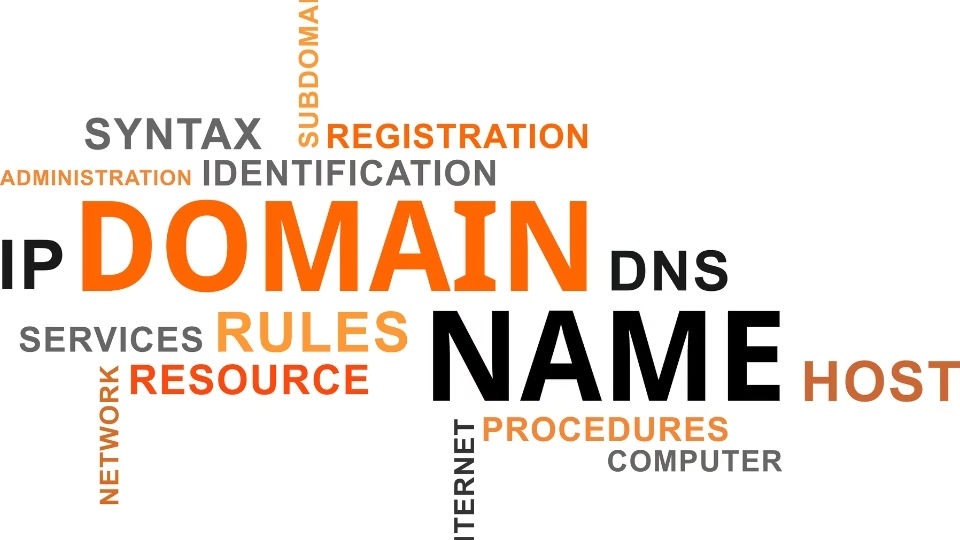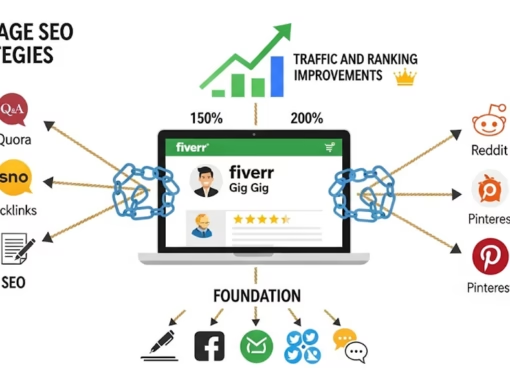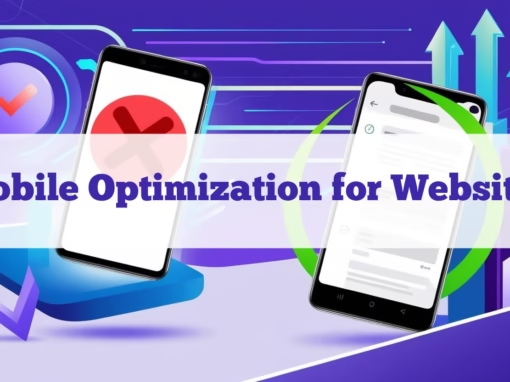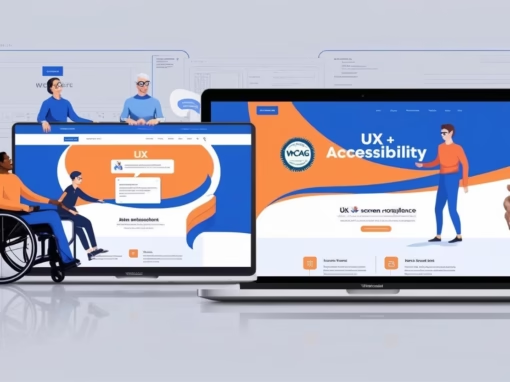In the digital age, your online presence is just as important as your physical one—if not more. Whether you’re a business owner, freelancer, content creator, or simply someone looking to establish a personal brand, one thing is essential: a strong domain name. It serves as your address in the vast online world and plays a significant role in how you’re perceived, found, and remembered.
This comprehensive guide will walk you through everything you need to know about domain names, including what they are, how they work, why they’re important, how to choose the perfect one, and common mistakes to avoid. Let’s dive deep.
-
- What Is a Domain Name?
- The Structure of a Domain Name
- Why Domain Names Matter
- Choosing the Right Domain Name
- Domain Name Extensions: Which One Should You Choose?
- Where to Buy a Domain Name
- Domain Privacy and WHOIS Protection
- Domain Name SEO: Myths and Facts
- What If Your Desired Domain Name Is Taken?
- Domain Name Mistakes to Avoid
- Domain Name and Branding Strategy
- Managing Multiple Domains
- Should You Invest in Domain Names?
- Tools to Help You Choose a Domain Name
- Legal Considerations for Domain Names
- Final Tips for Domain Success
- Conclusion

1. What Is a Domain Name?
A domain name is the web address that users type into their browser’s address bar to visit your website. It’s essentially your digital street address. Instead of typing a complex string of numbers (called an IP address), users can simply enter something like www.example.com.
1.1 Domain Name vs. URL
While the terms are often used interchangeably, a domain name is just one part of a URL (Uniform Resource Locator). For example:
- URL:
https://www.example.com/about - Domain Name:
example.com
If you’re curious about the technical differences, check out our detailed guide on What is a URL?.
1.2 How Do Domain Names Work?
When someone types your domain name into a browser, here’s what happens:
- The browser sends a request to a global network of servers that form the Domain Name System (DNS).
- These servers look up the domain name and translate it into an IP address.
- The browser uses that IP address to access your website’s server and load your content.
2. The Structure of a Domain Name
Domain names are made up of three main parts:
-
Subdomain: Often “www”, but can be anything (e.g., blog.example.com).
-
Second-Level Domain (SLD): The core name (e.g.,
example). -
Top-Level Domain (TLD): The extension (e.g.,
.com,.net,.org).
2.1 Common TLDs
-
.com– Commercial (most popular and widely recognized) -
.org– Typically used by non-profits -
.net– Originally for networks, now used widely -
.edu– Educational institutions -
.gov– Government entities
There are also country-code TLDs like .uk, .ca, and .in, as well as newer TLDs like .app, .blog, .tech, and more. For a deeper dive into choosing the right TLD, read our guide on Choosing the Right TLD for Your Business.

3. Why Domain Names Matter
Your domain name isn’t just a technical requirement—it has significant branding, marketing, and SEO implications.
3.1 Brand Identity
A well-chosen domain name becomes synonymous with your brand. Just think of names like:
-
google.com
-
amazon.com
-
facebook.com
These names are now household terms because they are short, unique, and easy to remember.
3.2 Trust and Credibility
A custom domain adds professionalism and trust. People are more likely to take your site seriously if it’s yourbrand.com instead of yourbrand.freewebsite.com.
3.3 SEO and Visibility
While domain names don’t have the same SEO power as they used to, having a domain name that includes relevant keywords or a recognizable brand can still positively affect search engine rankings and click-through rates. For more SEO tips, check out our article on SEO Best Practices for Beginners.
3.4 Email and Branding Integration
Owning a domain allows you to create branded email addresses (e.g., [email protected]), which looks far more professional than using Gmail or Yahoo addresses.
4. Choosing the Right Domain Name
Selecting the perfect domain name is a mix of art, science, and strategy. Here are key factors to consider:
4.1 Keep It Short and Simple
The best domain names are concise and easy to spell. Long, complex names are harder to remember and more prone to typos.
- ✅ Good:
snapchat.com - ❌ Bad:
thebestmessagingappforyou.com
4.2 Make It Brandable
Your domain should stand out. Brandable domains are unique, memorable, and pronounceable.
Examples:
- Spotify
- Etsy
- Zillow
These names may not have a direct meaning but are highly brandable.
4.3 Avoid Numbers and Hyphens
- Numbers can be confusing (“is it 5 or five?”)
- Hyphens break the flow and look less professional
Stick to alphabetic characters unless the number is part of your brand identity (e.g., 99designs.com).
4.4 Use Relevant Keywords (Carefully)
Including keywords like “photography” or “marketing” can help people instantly understand what your site is about.
However, don’t overdo it. Avoid “exact match domains” unless they sound natural and don’t look spammy.
4.5 Think Long-Term
Choose a name that can grow with your brand. For example, if you choose bestdrones2024.com, what happens when 2025 comes around?
5. Domain Name Extensions: Which One Should You Choose?
The .com TLD is still the gold standard due to its familiarity and trust factor. However, other extensions can work well depending on your goals:
.orgfor nonprofits.techfor tech startups.iofor SaaS and tech products.shopfor eCommerce.blogfor content creators
Tip: If .com is unavailable, try different variations or consider new TLDs, but always keep branding in mind.
6. Where to Buy a Domain Name
You can register domain names through domain registrars. Popular registrars include:
-
Namecheap – Affordable domains with free WHOIS privacy.
-
GoDaddy – Popular registrar with frequent discounts.
-
Google Domains – Simple and reliable domain registration.
-
Bluehost – Great for bundling domains with hosting.
6.1 Things to Look for in a Registrar
-
Competitive pricing
-
Free WHOIS privacy protection
-
Easy domain management dashboard
-
Good customer support
-
Minimal upsells and hidden fees
Note: Domains are usually rented on a yearly basis, and you need to renew them to keep ownership.
7. Domain Privacy and WHOIS Protection
When you register a domain, your personal information (name, email, address) becomes publicly visible in the WHOIS database. This can lead to spam and privacy concerns.
Most registrars offer WHOIS Privacy Protection (sometimes called Domain Privacy), which replaces your info with the registrar’s generic info. Always enable this if it’s free or affordable.

8. Domain Name SEO: Myths and Facts
Let’s clear up a few SEO-related misunderstandings about domain names:
✅ Facts
- A keyword in the domain might slightly help with SEO.
- A brandable domain encourages backlinks and mentions.
- A short, relevant domain improves CTR on search engine results.
❌ Myths
- Exact match domains guarantee top rankings (they don’t).
- Hyphens improve SEO (they actually reduce trust and click-through rates).
- You need a
.comto rank (not true — content and backlinks matter more).
9. What If Your Desired Domain Name Is Taken?
This happens more often than not, especially with .com domains.
9.1 Try These Strategies:
- Add a word (
getyourbrand.com,tryyourbrand.com) - Use abbreviations or acronyms (
ymbrand.com) - Try a different TLD (
yourbrand.co,yourbrand.io) - Contact the current owner and make an offer
For tips on negotiating, read our guide on How to Negotiate for a Domain Name.
9.2 Domain Marketplaces
You can also buy domains from these platforms:
- Sedo – A leading domain marketplace.
- Flippa – For buying and selling domains and websites.
- BrandBucket – Curated brandable domain names.
10. Domain Name Mistakes to Avoid
Avoiding common pitfalls can save you time, money, and frustration:
❌ Choosing a name that’s too long or complex
❌ Failing to check for trademark conflicts
❌ Using obscure or confusing spelling
❌ Ignoring domain expiration reminders
❌ Not securing social media handles with the same name
Always research your name thoroughly before registering it!
11. Domain Name and Branding Strategy
Your domain name is the first step in your overall brand strategy. Use it consistently across all platforms—social media, business cards, presentations, and marketing materials.
11.1 Check Availability on Social Media
Before finalizing your domain name, check if the same or similar username is available on platforms like:
-
Facebook
-
Twitter (X)
-
Instagram
-
YouTube
-
LinkedIn
There are tools like Namecheckr or KnowEm that let you check availability across multiple platforms.
12. Managing Multiple Domains
Many businesses register multiple domains to protect their brand or run various campaigns. For example:
- Redirecting
yourbrand.nettoyourbrand.com - Registering typo versions to catch misspelled traffic
- Using niche domains for product launches (e.g.,
yourproductname.com)
Use redirects or subdomains wisely, and manage everything from one central dashboard.
13. Should You Invest in Domain Names?
Yes, domains can be digital assets. People make thousands (even millions) by buying and selling domains. This is called domain flipping.
Some famous domain sales:
- Voice.com – $30 million
- Hotels.com – $11 million
- CarInsurance.com – $49.7 million
While such sales are rare, brandable or keyword-rich domains still hold value in niche markets. For inspiration, check out our article on Successful Domain Flipping Stories.
14. Tools to Help You Choose a Domain Name
- LeanDomainSearch – Find available domain names quickly.
- Bust a Name – Combine keywords to generate domain ideas.
- DomainWheel – Get creative domain suggestions.
15. Legal Considerations for Domain Names
-
Trademark infringement risks: Always check if your desired domain name conflicts with existing trademarks.
-
Domain disputes: Learn about the UDRP process to handle conflicts.
-
Cybersquatting: Protect your domain from being hijacked.
16. Final Tips for Domain Success
-
📌 Renew your domains on time (consider auto-renew)
-
📌 Use SSL (HTTPS) to secure your domain
-
📌 Avoid free hosting platforms if you’re serious about branding
-
📌 Set up a custom email address
-
📌 Monitor your domain reputation and performance









0 Comments